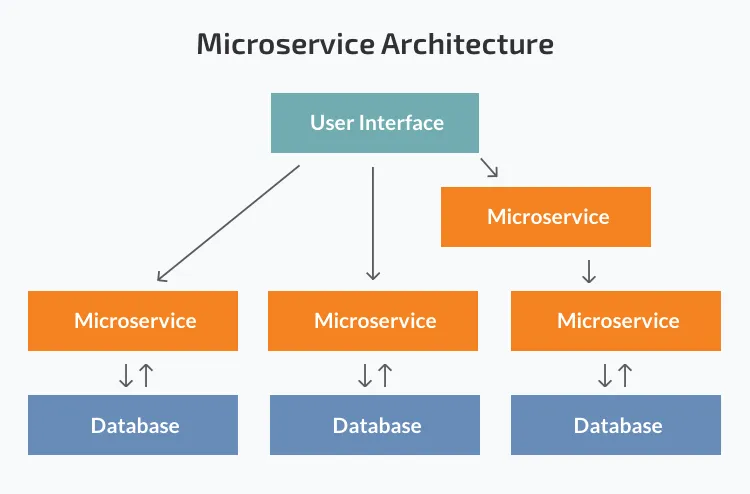Based on pros, cons and more importantly your needs!
Technology has evolved so fast and has adapted to the needs of people, and companies effectively! It has helped address emerging business issues, and now the microservices architecture promises faster time to market, business agility, and flexibility. And with so many advanced options comes the hard part, choosing which is the right architecture for your business? Before starting it is important to recognize that there is no such thing as "right" and "wrong" but rather there is what is best suited to your business and what is not.
Now we are going to help you differentiate between Monolith and Microservices. So that you decide which one best suits you and thus you already know which architecture you can use or exercise in your business model.
Monolith:
The advantage of one monolithic application is that it is super easy to develop, test and deploy! Once implemented, it simply adjusts based on ongoing changes that you want or need. The monolithic approach comes with performance benefits, as shared memory access is faster than interprocess communication (ICP), for example.
More examples of common Monolith use are:
- When you're starting! If your team is small and is in a foundation stage. If your team consists of 2-5 people they will find that a monolithic architecture is ideal to focus on and get started.
- You're testing, trying and building! If you are building a proof of concept, you will look for ways to rotate and evolve as you discover what will be most useful to your users. And for this, a monolith is perfect as it allows for rapid product iteration.
- It helps you at predictable scale and complexity. If your application does not require scalability that is very advanced and the complexity can be manageable, then a monolithic architecture is the best way forward for you.
Global trade has grown exponentially as each new channel creates an entirely new market. Increasingly demanding customers are looking for inspiring shopping experiences on all channels and, above all, that adapt to all devices, both mobile and desktop. Personalization is a key driver, high levels of care and service, and rapid solution delivery are just some of the challenges facing all merchants globally today. For this reason, it is understandable that organizations want to adapt quickly and be among the first to be recognized as innovators.

With this diagram you can better see what the structure is like and how a Monolith works.
Now that we are talking about the beauty of Monolith, it does not mean that the "ugly" side does not exist. For complete clarity and honesty we share with you some of the disadvantages of Monolith:
- High degree of software complexity: A successful app is constantly evolving to keep up with changing demands and the Monolith application can be a bit complicated to maintain and even difficult for some engineers to understand.
- No responsibility and lack of agility! To avoid a "big ball of mud" it is important to have an application that is easy to handle and understand otherwise you can discourage and even cause fear for individual developers to touch anything to avoid serious consequences.
- A centralized point of failure! Since the individual parts are highly coupled and dependent on each other, the result of this is a single point of failure that could bring down the ENTIRE system with one small mistake. This also leads to inefficient testing since full testing becomes crucial at points of failure.
- Scaling issues. Monolithic applications only allow you to scale out and this creates a lot of maintenance issues. Understandably, companies faced with the need to move faster and drive innovation are trying to find ways around these constraints.
Microservices:
Now let's talk about another approach... The microservices approach!
It helps encapsulate each business capability into individual services. Where each application process runs as a separate, loosely coupled service with its own logic and database. Upgrading, deployment, testing, and scaling occur within the scope of each service. While it is true that microservices do not reduce the complexity of a system, they do make complexity more visible and even better manageable. And depending on the need, the same service can be reused across multiple business processes and across a multitude of channels and touchpoints.
Typical best practices for microservices architecture are:
- Removing domains: During the design phase of your microservices, you should be very clear about the boundaries you need so that you can use them with business capabilities. This allows you to use the most efficient language for each domain.
- Bear the complexity. If you are planning to have a large application with multiple modules and user journeys that create a lot of complexity, a microservices architecture is the best option for you as it makes scaling and adding new capabilities much easier.
- Handle extreme requirements. We know that microservices can offer maximum agility, speed, and scalability. But applications with extreme requirements are best served by a microservices architecture because it can cater specifically to each service.
Something that may be obvious but can go unnoticed and is essential for Microservices application is:
- Experience in microservices. To get started with microservices, you need to have a team with experience in microservices or distributed design, supported by experts in DevOps and containers, as these concepts are closely related to microservices.

With this diagram you can better see what the structure is like and how a Microservice works.
Now just to leave you with the last thought... Microservices architecture has become more and more popular. But it is always important to know the context in which it is used. Now evaluating the pros and cons mentioned above you can walk away with this in mind:
- For a light application, a monolithic system is often better suited.
- For a complex and evolving application with clear domains, the microservices architecture will be the best option.
The main takeaway? Focus on the specific needs of your organization. This will help you clarify and reduce any unnecessary complexity and make the choice that suits you best!


